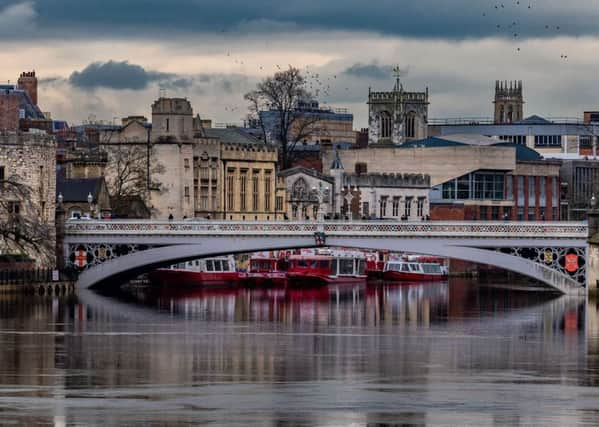York’s historic Lendal Bridge - a man-made Yorkshire landmark


The latter is one of the most recognisable bridges in Yorkshire and a popular landmark in the city and like so much else in York, it has an interesting history.
Lendal Bridge was the second of the three modern road bridges built over the River Ouse in York. It replaced an earlier ferry service, which had operated from Barker Tower, on the south-west bank, to Lendal Tower. The idea of a bridge at this location was first mooted in 1838 but just who would foot the bill became a point of controversy between the Corporation of York and the railway companies. Eventually, the Lendal Bridge and York Improvement Act was passed in 1860 and the foundation stone of the original bridge was laid later that year.
Advertisement
Hide AdAdvertisement
Hide AdHowever, tragedy struck in 1861 when the bridge collapsed during construction, killing five men. It had to be redesigned and was opened two years later. The new architect, Thomas Page, also designed York’s Skeldergate Bridge and Westminster Bridge in London.
Lendal Bridge as we see it now is an iron bridge with Gothic influences that were popular in Victorian England. The ornate parapet of the bridge features the white rose of York, the crossed keys of the Diocese of York and the lions of England. Additional ironwork includes York’s coat of arms and the initials V & A, representing Queen Victoria and Prince Albert.
The new bridge put the ferryman out of business, and records show that he received compensation of 15 pounds and a horse and cart.
A toll was charged to cross the new bridge. This cost half a penny for foot passengers, a penny for animals and twopence for horse-drawn vehicles. The last toll was charged in 1894, though the two small toll-houses can still be seen today, now housing cafés which have become a popular spot with tourists.
Camera Details: Nikon D5, Lens, Nikon 70-200mm Shutter Speed, 1/500sec Aperture, f/9 ISO, 400.
Picture by James Hardisty